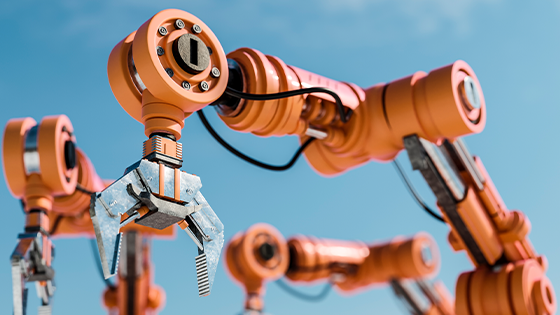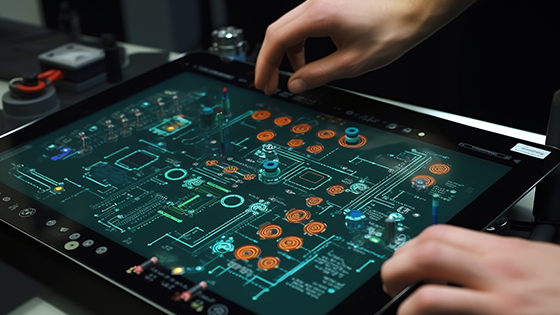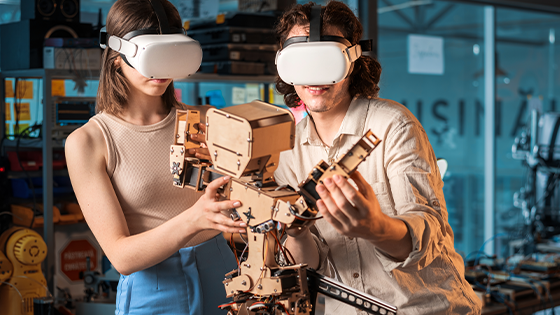
The industrial world is never short of challenges. Issues like low efficiency and resource waste have always troubled businesses. Coupled with increasingly unpredictable market demands, traditional industrial systems seem to be falling behind. But don’t worry—smartization and internetization are quietly becoming the game-changers. They’re like the "superheroes" of the industry, breaking through bottlenecks and unlocking endless possibilities for the future.

Smartization: Optimizing Efficiency and Decision-Making
What is smartization? Simply put, it makes the industry "smarter." By leveraging advanced technologies such as artificial intelligence, big data analytics, and machine learning, smartization enables machines to not only work but also think and make decisions!
For instance, intelligent sensors in factories can monitor equipment performance in real time, predict failures, and prevent unexpected downtime. This not only saves on maintenance costs but also ensures smooth production lines.
In contrast, traditional systems act like “obedient followers,” operating strictly by the book and only flagging issues when they occur. Smart systems, on the other hand, are like “high-IQ assistants,” proactively alerting you to problems and even suggesting solutions. They boost efficiency, quality, and safety, making production simpler and more effective.
Internetization: The Core of Connectivity and Collaboration
If smartization makes the industry smarter, internetization makes it more connected. Internetization enables seamless communication among devices, systems, and even different businesses, functioning like a well-coordinated team.
Imagine a factory where every machine can “talk” to each other, uploading real-time data to the cloud. From production to logistics, every step is dynamically controlled on a unified platform.
Take the Industrial Internet of Things (IIoT) as an example. It allows businesses to fully optimize their supply chain—streamlining raw material procurement, inventory management, and order processing. This real-time data-sharing approach not only speeds up response times but also significantly reduces resource waste.
Even better, internetization simplifies cross-departmental and cross-enterprise collaboration. Suppliers, manufacturers, and customers can sync information effortlessly without relying on cumbersome manual processes, enhancing efficiency while aligning closely with customer needs.

The Synergy of Smartization and Internetization
The relationship between smartization and internetization is like that of a “golden duo”—one cannot thrive without the other. Smartization relies on internetization to provide robust connectivity, ensuring data flows swiftly and accurately between devices and systems. Meanwhile, internetization depends on smartization to process these data into actionable insights and intelligent decisions.
For example, in a smart factory, sensors continuously collect data on temperature, pressure, and energy consumption, uploading them to the cloud via internetized systems. Smart algorithms then analyze these data to adjust equipment parameters and optimize production processes. Without internetization, these data remain isolated. Without smartization, they’re just “dead data” with no practical value.
Most importantly, this synergy enables predictive maintenance. For instance, when machine performance data shows anomalies, the system sends early warnings and suggests solutions. This collaboration minimizes downtime and enhances overall production line efficiency.
Smartization and internetization act as the “accelerator” of Industry 4.0, propelling businesses toward a more efficient, intelligent, and sustainable future.
Comprehensive Benefits: Higher Efficiency, Lower Costs
What exactly can smartization and internetization deliver? In short: greatly improved efficiency and significantly reduced costs. Here’s how:
- Enhanced Production Efficiency: Automated operations, real-time data sharing, and analytics reduce human error and time waste. Every stage of the production line operates in its optimal state, supported by precise data.
- Resource Optimization: Energy consumption, material usage, and inventory management are all precisely controlled, eliminating waste. This saves costs in the long run while aligning with sustainable development goals.
- Increased Competitiveness: With these technologies, businesses can swiftly adapt to market changes and deliver customized products. Customer satisfaction rises, and so does market reputation.
In essence, the combination of smartization and internetization is like an “upgrade pack” for modern businesses—streamlining internal operations while enhancing external competitiveness.
Conclusion: Embracing the Future, Starting Now
In the journey of industrial evolution, smartization and internetization are no longer “optional” but “essential.” They not only address the pain points of traditional systems but also pave the way for sustainable future growth. Whether it’s improving production efficiency, optimizing resource utilization, or boosting market competitiveness, these technologies are indispensable.
Faced with this trend, businesses should not stand by but actively embrace change. From introducing smart devices to building internetized platforms, every step is a crucial milestone toward the future. Those who seize the opportunity and take action first will stand out in the competitive market, becoming leaders of the new industrial wave.
The future of the industry is already here, and now is the best time to start. Smartization and internetization will be your best partners on the path to success!
Post time: Jan-14-2025

